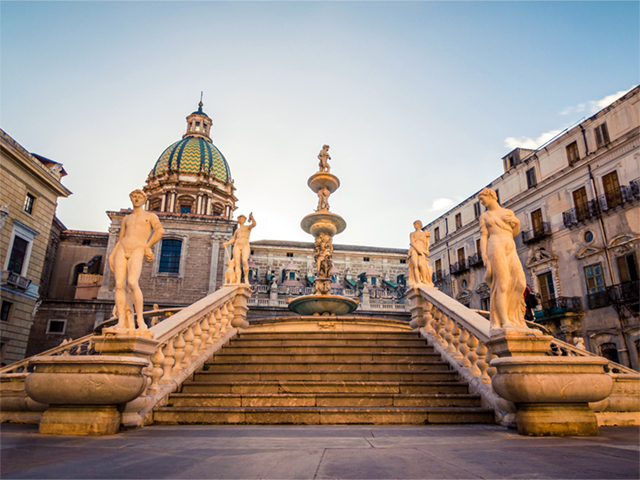The best of Termini Imerese: 10 things to see and do
Visiting Termini Imerese: history, monuments, archeological sites, churches, carnival and curious facts.Termini Imerese is a port city located on the North coast of Sicily, in the province of Palermo, which is only 38 km away, and it is connected by sea to the Port of Civitavecchia thanks to ferry boats GNV (Grandi Navi Veloci).
Embedded between Monte San Calogero on one side and the sea on the other side, this city of Greek origins and full of history and culture has a lot to offer to visitors. Both if you are only passing by or staying, keep reading this article to discover 10 things to do and see in Termini Imerese that will make your stay even more interesting.
A bit of history
Before discussing this mini-guide, it is good to know a little of the history of this city! First of all you need to know that its name is closely linked to an ancient thermal complex which remains are still possible to admire. The ancient city of Himera founded by the Greeks in 648 BC, at the end of the Greek Punic wars, would lead to the birth of the new Thermae Himerae, the current Termini Imerese.
According to the myth these thermal baths were flowed at the behest of the nymphs, who tried to please goddess Athena and Hercules, to help him recover after the battle with Erice and he was the first to dive in the thermal waters.
During the Roman Empire, the city experienced a period of great richness that earned the nickname of "Civitas Splendidissima". In this period the forum, the curia, the amphitheater, the port, the bridge of San Leonardo and the aqueduct were constructed.
In the Norman period it was appointed royal city until the 12th century when it became also an Episcopal seat. Important collection center for the commerce of wheat, throughout the centuries the city established trade relations with the main ports of the Mediterranean including Genoa, Pisa, Venice, Marseille and Barcelona.
Today the city is an important railway articulation on line Messina-Palermo, and it is also connected by sea with the Port of Civitavecchia thanks to ferry GNV.
1. The Duomo or Cathedral of Saint Nicholas
Our itinerary starts at one of the city's most significant cult buildings, that is, the Cathedral devoted to Saint Nicholas.
The construction of the church started by midth 15th century and was completed in 1912. It has a Latin Cross groundplan and it is divided into three naves. Inside the two lateral aisles are the chapels devoted to the Saints, while the lateral niches of the façade house 4 statues of Saints John the Baptist, Peter, Paul and James.
In the interior of the church are many paintings and artworks: it's worth noting the chapel of Santa Maria la Nova with a 17th-century altar devoted to the Inmaculate and decorated with precious inlaid many-coloured marbles and a wooden cross, painted on both sides by Pietro Ruzzolone in 1484, representing Jesus dead on the Cross and the Ressurrection of Jesus.
Since 2010, the Duomo has also a Museum of Sacred Art with silver objects, vestments, reliquaries and liturgical objects of great value.
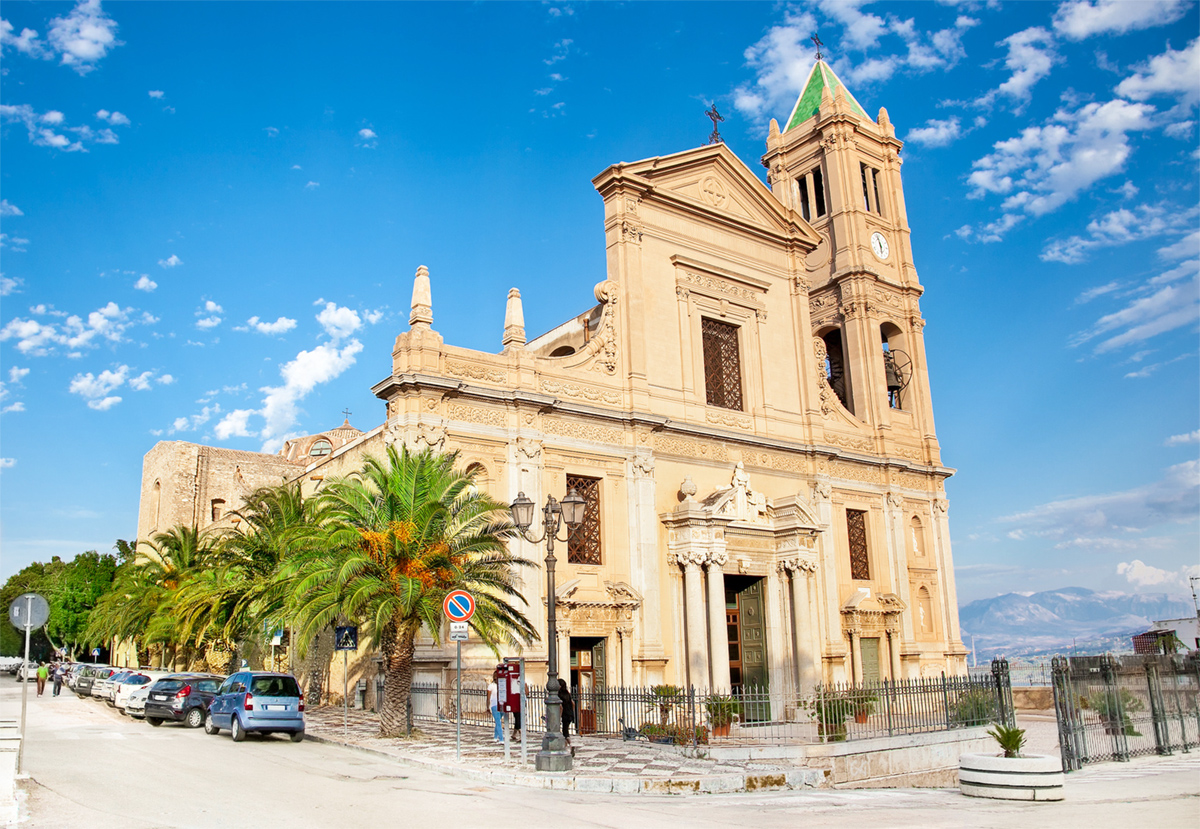
Cathedral of Saint Nicholas - Termini Imerese
2. Baldassarre Romano City Museum
If you love Ancient art and in particular Greek-Roman Art, the small but charming Baldassarre Romano City Museum in front of the Duomo of Termini Imerese is really worth a visit.
Established in 1873, this museum houses numerous finds belonging to different historical periods. Many of them come from the excavations carried out over the years at the archaeological area of Himera: coins, architectural fragments, statuettes and various furnishings.
A big space is also dedicated to the Roman period of which you can admire portraits and statues, epigraphs, elements of the Cornelio Aqueduct and many objects of daily life.
The art gallery houses the works of Sicilian artists of the 16th and 17th centuries and other Flemish works like the Annunciation or the Byzantine triptych of the Hodegetria.
Finally, inside the museum there is also a collection of works by local artists and historians of the 19th century: paintings, iconography, collections, engravings and other precious documents that enrich the museum collection.
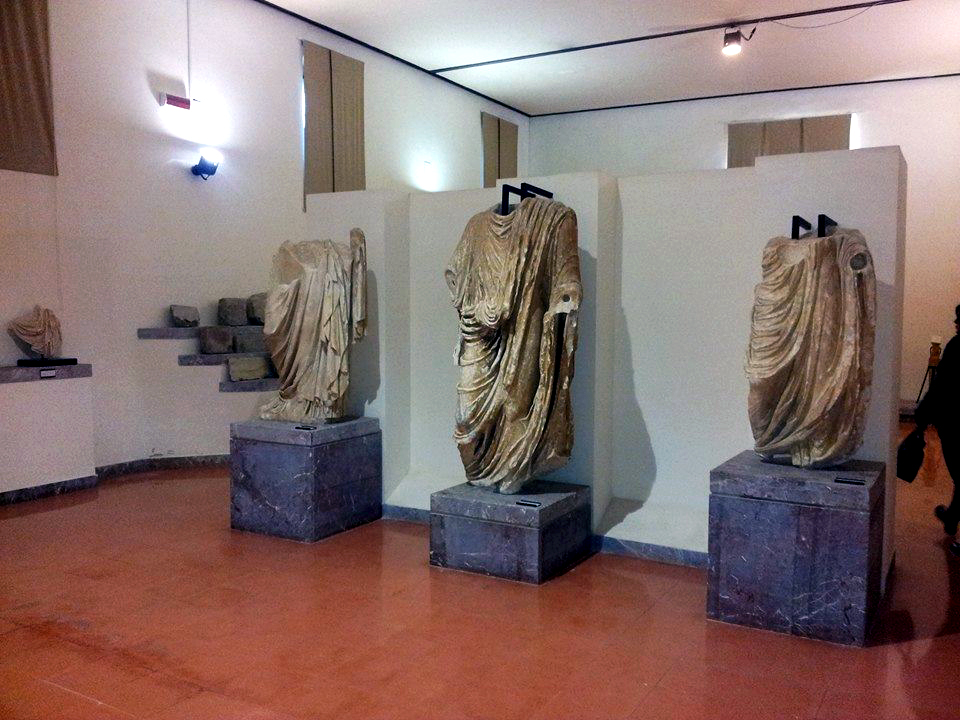
Baldassarre Romano City Museum in Termini Imerese
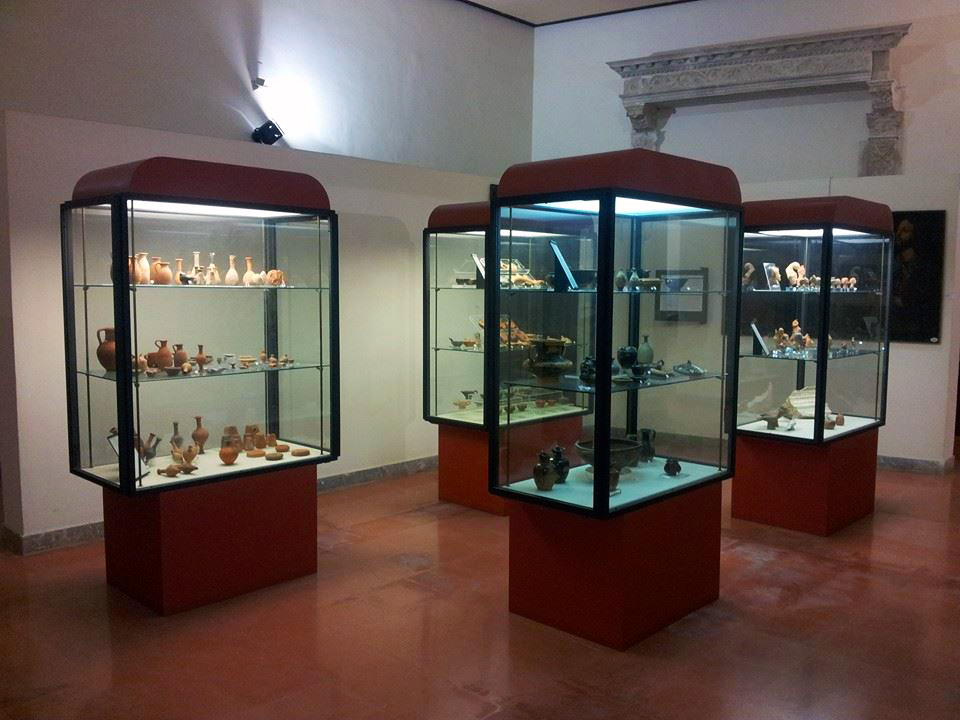
Baldassarre Romano City Museum in Termini Imerese
3. Ancient city of Himera: Archeologica Area and Antiquarium
Not far from Termini Imerese, in the locality of Buonfornello is located the archaeological area of Himera, ancient city founded in 648 B.C. by a group of settlers from Zancle (today's Messina) to whom joined some fugitives from Siracusa.
The city, thanks to its strategic position, was scene of clashes during the Greco-punic Wars and took part together with Agrigento and Siracusa at the battle of 480 B.C. held at the plain of Buonfornello. The Greek coalition led by Gelone of Siracusa earned a victory so significant to be associated, in memory, to the battle of Salamis.
Destroyed by Hannibal in 409 BC, the surviving population moved in the territory of the nearby thermal springs and founded the current Termini Imerese.
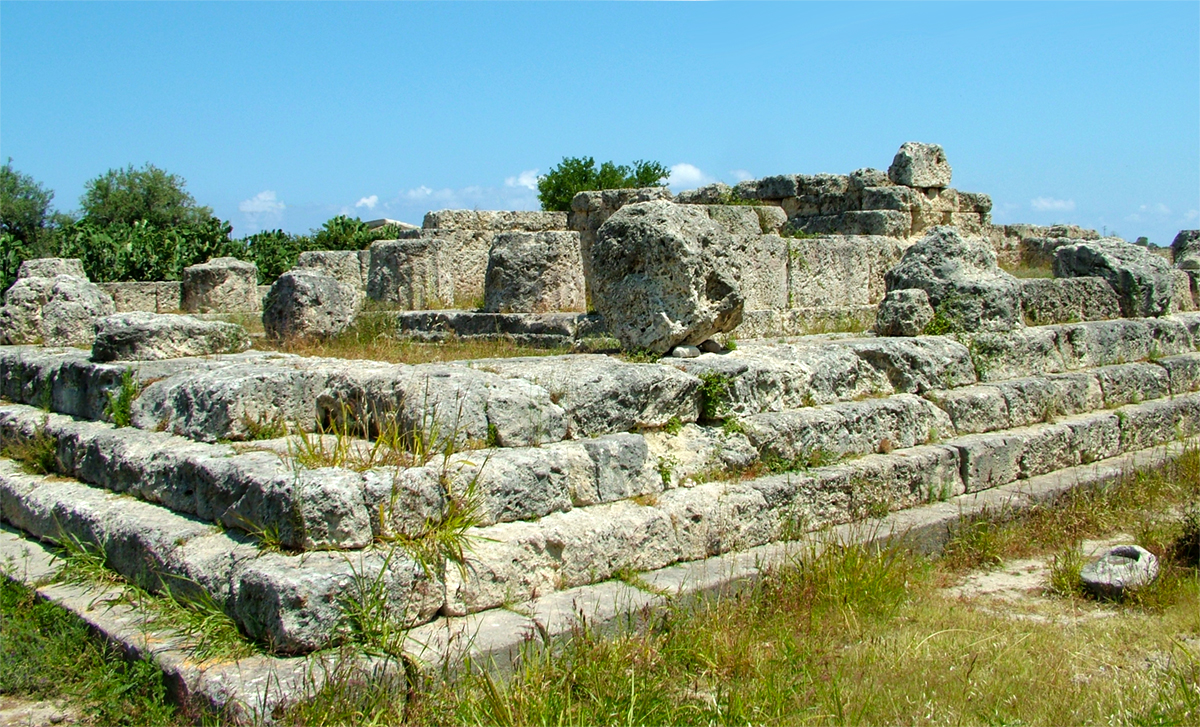
Ruins of Himera - Temple of Victory (Termini Imerese) - photo by Clemensfranz - CC BY 2.5
The remains of the Temple of Victory devoted to goddess Athena, are the most significative proof of the ancient city. From the excavations of this temple were recovered many objects and some architectural elements of great importance such as elegant gutters embellished with lion heads, that you can see at the Baldassarre Romano City Museum.
Also visit the nearby Antiquarium, museum inside which you can admire many other finds fruit of excavations in the area: bronze, ceramics, vases, various artifacts and much more. To learn about opening hours and ticket prices refer to the box at the botton of this page.
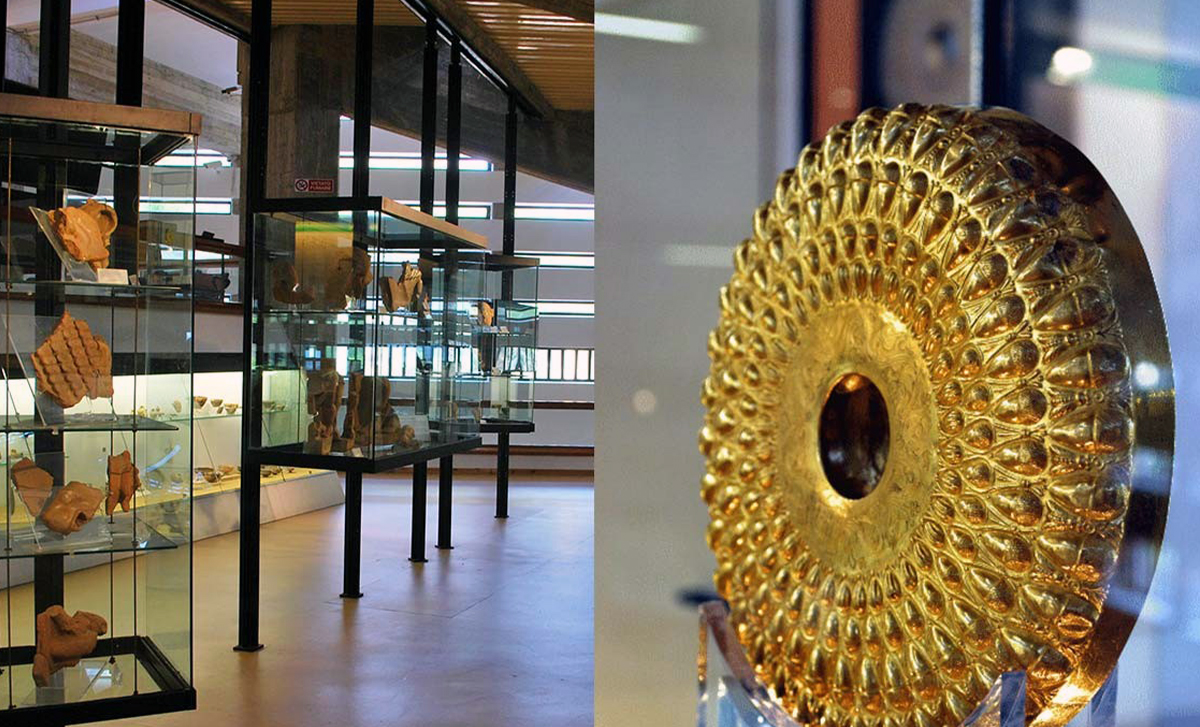
Ruins of Himera - Antiquarium (Termini Imerese)
4. Staircase in Via Roma
Via Roma is a monumental staircase built by the end of the 19th century, which connects the lower part of the town with the higher part. Starting from the so-called "Chianu Salìa", the junction located between Via Mulè and Via Roma, after a sinuous 300-meter path you will arrive in Via Mazzini, a few steps from Piazza Umberto I.
The stairway is formed by steps arranged in a triple row, of which the central one, is wider and offset compared to the others. The flooring is made of marine stones delimited by small slabs that form a geometric design that recalls a sort of great herringbone.
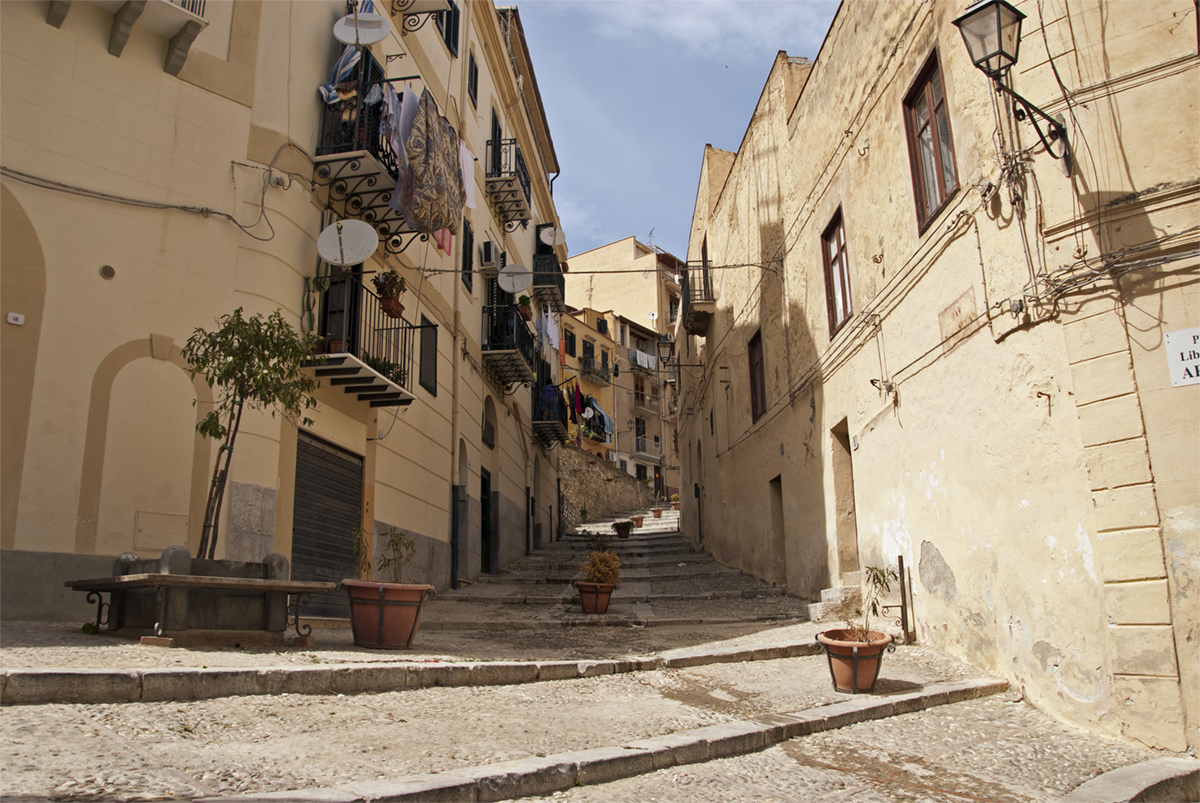
Staircase of Via Roma - Termini Imerese
Some historical buildings look out onto the stairs, like the Medieval tower and the Jesuit School, used as Tribunal.
Our tip is to climb the stairs slowly, to enjoy the surroundings and plunge completely into the past of the city.
Before theinvention of cars, this street was always heaving with people and still today you can immagive how it would look back in the day, with the shops and the artisan workshops opened on both sides of the street and the incessant coming and going of passers-by.
Nowadays you can live again a bit of the old magical atmosphere on December 8 with the procession dedicated to the Inmaculate, a celebration deeply felt by the city, during which the procession slowly walks down the staircase.

Staircase in Via Roma (Termini Imerese)
5. Cornelius Roman Aqueduct
Among the works built under the Roman Empire an outstanding position is for the aqueduct of Cornelius, of which today it is still possible to admire the remains.
Located in via Falcone and Borsellino (locality Figurella) this bridge with double arch served to bring water to the town from the nearby source of Brucato. The bridge remained in activity until 1860, and it is another brilliant example of the high technological level reached by the Roman Empire.

A section of Cornelius Roman Aqueduct - Termini Imerese
6. Carnival of Termini Imerese
The Carnival of Termini Imerese is the oldest carnival in Sicily. From its first edition, back in 1876, this event involves the whole city, with the traditional parade of papier-mâché floats.
Accompanied as always by the musical band and multicolored groups on costumes, the floats cross the historical center until they arrive in Piazza Duomo, where generally the awards ceremony take place and the most beautiful float is chosen.
As in other Sicilian carnivals, among the floats appears also the mask of the Nannu (grandfather), an anthropomorphic personification of the carnival itself.
This papier-maché character is given to the stake on the day of Mardi Grass, to symbolically represent the end of the year that has just ended.

A mask in the Carnival of Termini Imerese
But the authentic typical feature from the carnival of Termini Imerese is the Nanna (granma), a female figure, unique in Sicily, that goes with the Nannu during the parade and is a symbol for fertility, continuity and rebirth that will come with the new year.
Both characters, the Nannu and the Nanna are now a true symbol of the Carnival of Termini Imerese.
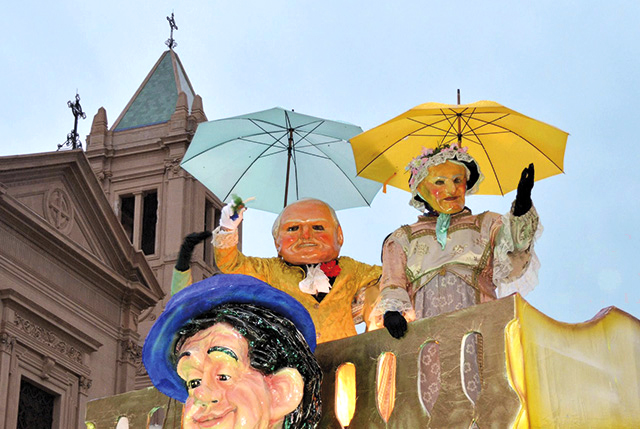
Nannu and Nanna Costumes - Carnival of Termini Imerese
7. San Leonardo Bridge
The monumental bridge of San Leonardo is a majestic architectural work that you can see outside the city along the State Road 113. Built in 1721 under the reign of Charles VI of Hapsburg by architect Agatino Daidone, this bridge has been the main connection with Palermo for over two centuries.
It is named after the river that crosses it and its structure rests on one side in the cliff of Patare and on the other above the very solid remains of an ancient bridge presumably of Roman times.
The bridge is constituted by a wide central round arch and a small lateral arch with two lateral ramps perpendicular to its axis.
The imposing construction in the highest point of the arch is adorned with a great stone figure that represents a dormant man also accompanied by a short inscription "Secura quiete" i.e. security and peace of mind for the traveller that crosses it.
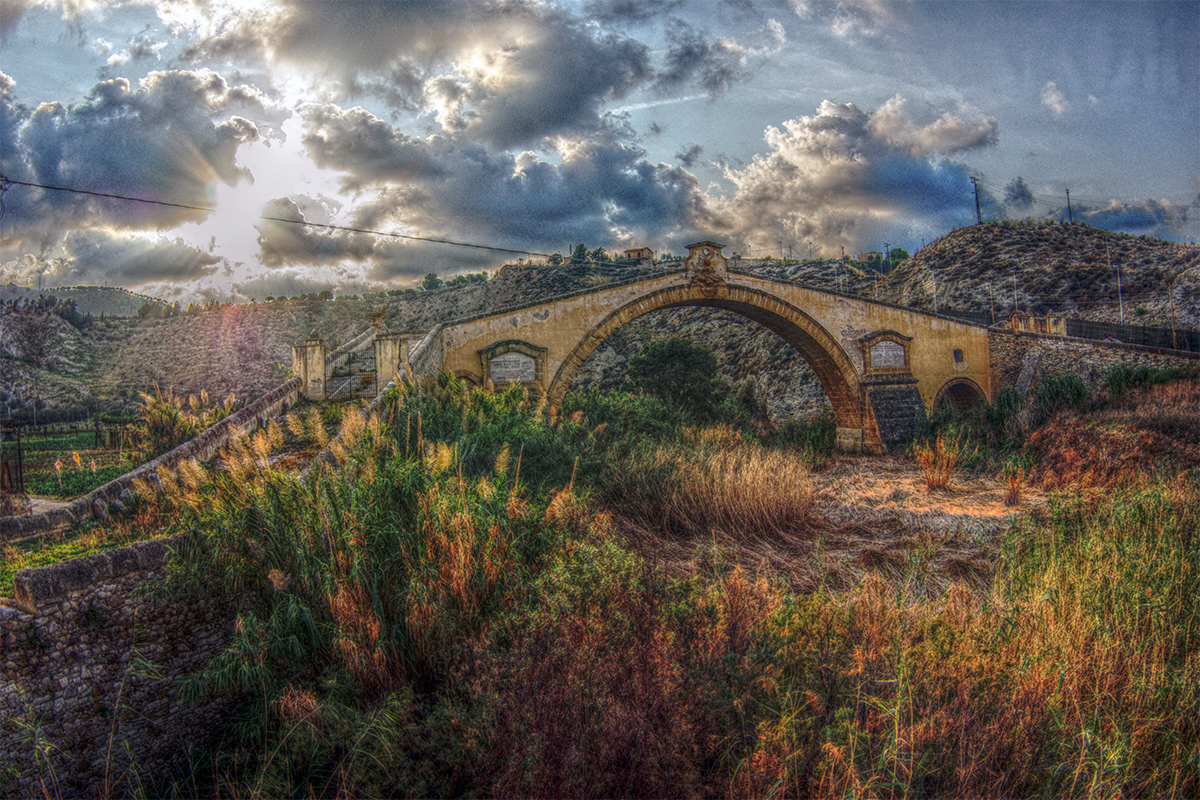
San Leonardo Bridge - Termini Imerese
8. Termali di Termini Imerese
The thermal waters that gave the name to the town of Thermae Himerensis, are of volcanic nature and contain sodium iodide, bromide and iodine. The water gushes from two springs at a temperature of 43° C.
Pindaro was the first to declare "The warm source of Nymphs" wherein Hercules found refreshment afte one of his labors. Tradition has been transmitted thanks to Diodoro Siculo.
The construction of a true spa establishment is due to the Romans. On the ruins of these baths, in fact, arose in successive ages, other two buildings: the first in the 18th century, the second, designed by architect Giuseppe Damiani Almeyda, at the end of 19th Century.
In the modern Grand Hotel delle Terme, you can take advantage of numerous cures, dermatologic treatments, saunas, mud therapy, mesotherapy and whirlpool.

Thermal Baths at Termini Imerese
9. Church of Maria SS. Annunziata
The Church of Maria Santissima Annunziata is in Via Verona, in the Rocchecelle neighbourhood and dates back to the early 17th century. It was built over the remains of a previous Medieval church.
The construction of the new basilica started thanks to the involvement of Chaplain Don Giuseppe Ciuffo.
The outside is dominated by the beautiful blue majolica dome that rests on a high octagonal drum and is surmounted by a dome which dominates the urban landscape.
The facade has a portal dated 1634 flanked by two smaller portals.
The complex is preceded by a garden, which is accessed from a rich seventeenth century portal surmounted by a plaster Annunciation scene. The Medieval stairs with a double ramp allow the access to the church.
Inside you can admire several works including a group of marble statues depicting the Holy Family, work by Andrea Mancino from Palermo (Madonna col Bambino, 1494) and Francis Li Maistri from Carrara (San Giuseppe, 1515).
In the church in the past, there was also an ebony Crucifix donated by King Alfonso of Castile who was considered miraculous, today lost.
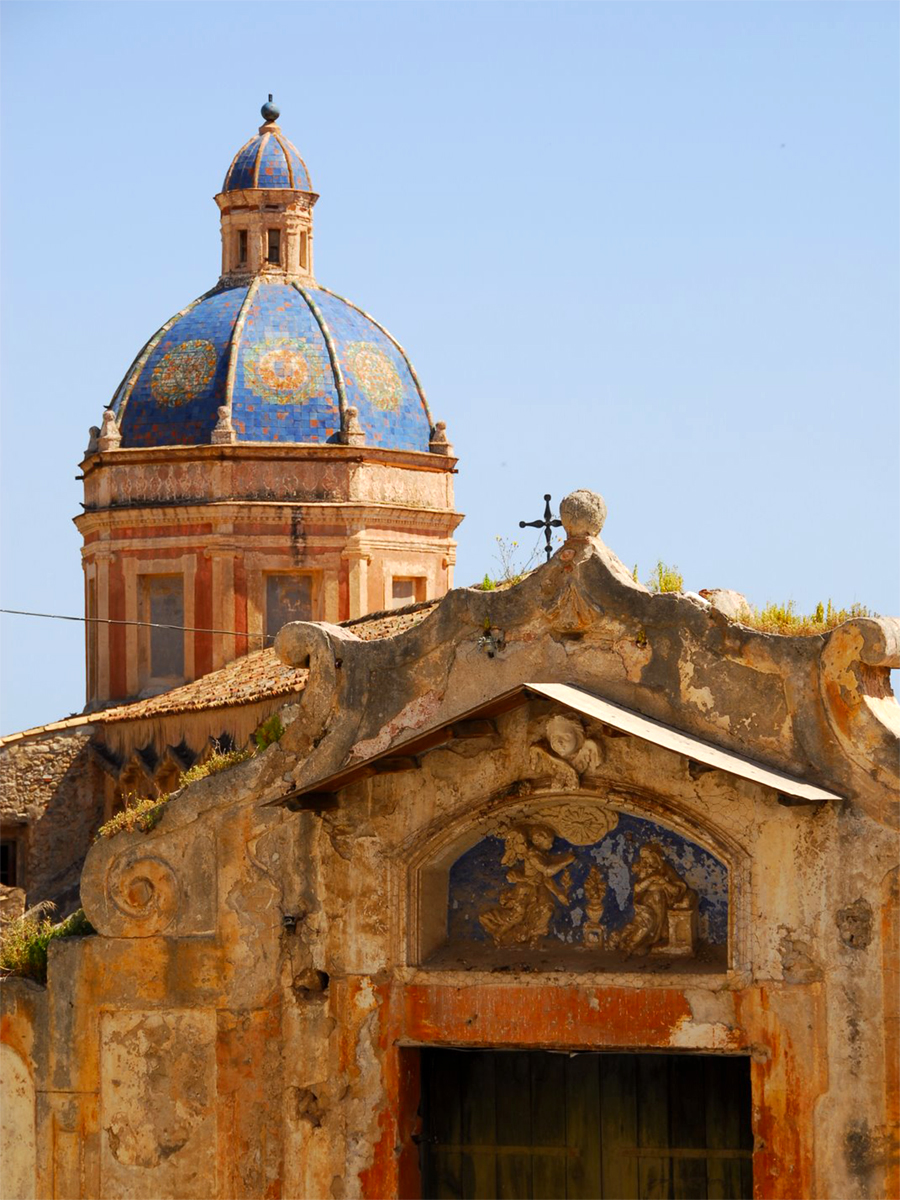
Church of Maria SS Annunziata - Termini Imerese
10. Visiting Palermo
Palermo is less than 40 km away from Termini Imerese and getting there is easy as pie. The Sicilian capital, one of the most important cities in Italy, certainly needs no presentation!
Fenicians, Greeks, Romans, Arabs, Normans, Suebi, French and Spanish: for many centuries the history of Palermo has been marked by the domination of different cultures and the meeting and clash of the people who have made Palermo a city with a thousand faces to be discovered.
That's why we invite you to red our article 10 Things to See in Palermo.
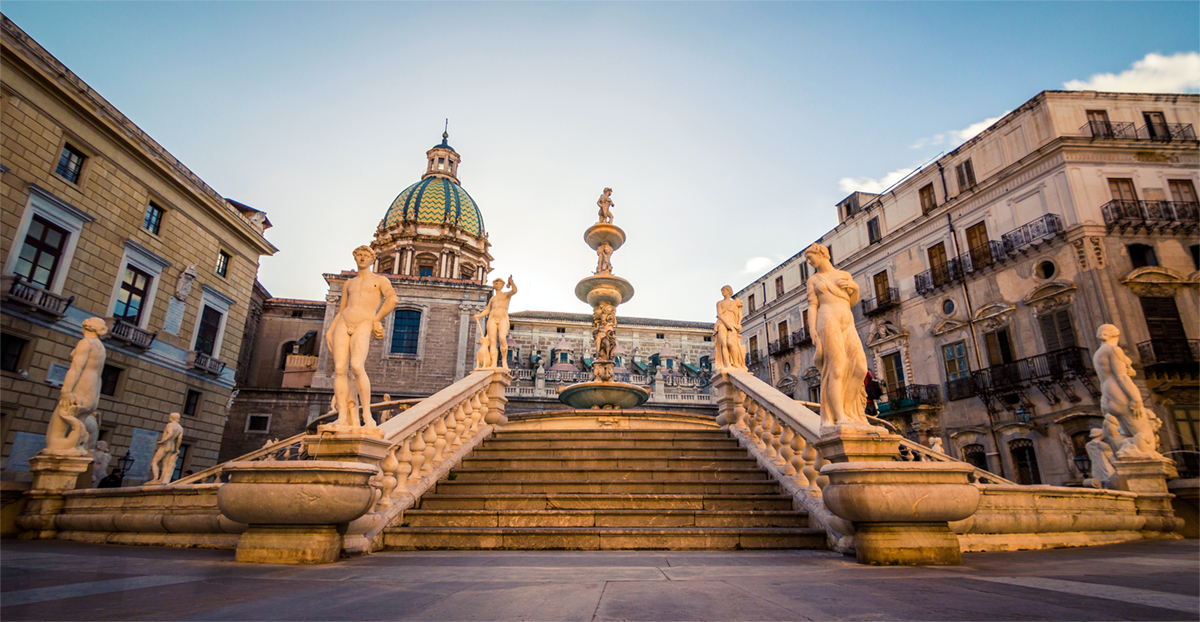
Visiting Palermo
Our article ends here, but of course there are many more things to do and see in Termini Imerese.
As you have seen, this small port city is able to amaze avery traveller with its history and its old monuments. So don't think it twice, you only need to check the timetables and the days of departure and pack your luggage... enjoy your trip!
Useful information
Termini Imerese
- TIMETABLES
City Museum Baldassarre Romano
- Tuesday through Saturday: 9.00 - 13.00 and 16.00 - 18.30- Sunday: 8.00 - 12.30 | Monday closed*For information and reservations: tel +39 0918128550 fax +39 0918128552Antiquarium Museum and Archeological Area of Himera
- working days: 9.00 - 19.00- Sunday and Holidays: 9.00 - 14.00- Monday: Closed- PRICES
Antiquarium Museum and Archeological Area of Himera
- Full: €4- Reduced €2- Free admission every first Sunday of the month



 PORT MOBILITY CIVITAVECCHIA
PORT MOBILITY CIVITAVECCHIA








